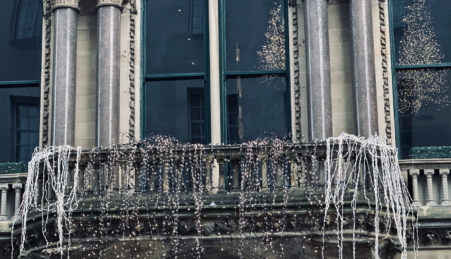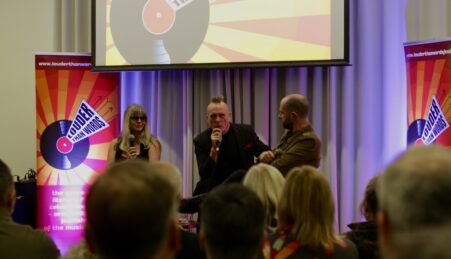By Pierangelly Del Rio
The People’s History museum concludes its “Wonder Women” festival with ‘Feminism and Museums’, a discussion with researcher, writer, curator and artist Dr Jenna C. Ashton
The series, which celebrated the centenary of the passing of the Representation of the People Act, ran throughout March and featured performances, exhibition, tours and debates.
In partnership with the RAH! Programme, the People’s History Museum provided a space to discuss Dr Ashton’s two-volume edited collection titled: Feminism and Museums: Intervention, Disruption and Change (published by MuseumsEtc, 2017 and 2018), in the context of the national centenary celebrations around women’s suffrage.
In two volumes, Feminism and Museums explores how museums are responding to the wider socio-political challenges faced by women and girls globally, in which they too play a part. In over fifty chapters, the volumes collect a wide range of case studies, feminist actions, interventions and disruptions which are impacting the processes of collecting, learning, interpretation and engagement in today’s museums, galleries and heritage organisations.

Feminism and Museums presents creative resistance by both high-profile galleries and grassroots activist collectives from all over the world, and issues of colour, disability, domestic abuse, indigenous rights, labour, land use, migration, pornography, rape, refugees, sexuality, sex-work, technology and work examined.
The People’s History Museum’s Programme Officer, Museologist and social historian, Helen Antrobus, introduced Jenna Ashton and her work, giving an overview of what the project was about. Helen was one of the volumes’ contributors, having written a chapter for volume two’s segment, curatorial and archival disruption, titled For Most of History, Anonymous Was a Woman. Helen inquired about the motivation for the project and how it was put up together, to which Dr Ashton commented:
“This was a very personal project, it began when the campaign was going on for the presidential election and it looked like Donald Trump was about to succeed, which he did. And there was stuff happening in January and March like the Guerilla Girls who were starting their European Tour and gained recognition by highlighting the lack of representation of women artists and practitioners in art galleries. And there was also 2018 and the suffragette mania taking part. It just seemed like the right time to turn around the project.”
Despite being such a large-scale project, Dr Ashton managed to put it together in the span of half a year, which she still finds hard to believe. A call for submissions was made, accepting contributions from all over the world. Over 300 submissions were received, however, Dr Ashton selected the ones, which demonstrated different types of practice, happening at different levels. The ones selected were focused on high directorship curatorial activity, education, activism and outsider intervention work, which would later become the volumes’ subsections. The final result assembles projects that tell a story, and the women’s discontent in regards of the realities they face.
Varied perspectives, not limited to the commonwealth, were collected from places in Asia, South America, and the South of the United States. When asked about the difference of what happens in museums and feminism around the world, she said: “We wanted to make sure to have that international spread across the continents, because how we see intervention, change and disruption is very different internationally.”
She stressed the difference of being a feminist in Western and non-Western society, saying: “I see some of the things feminist are doing here in 2018 and honestly, it’s quite bland, whereas the women there are putting their lives in the line of danger. How we perceive global feminism is very interesting, in the sense that what we perceive as ‘disruptive’ here, could get you into prison somewhere else.”
In a national context, it was observed during the discussion that the majority of workers in heritage sites, museums, and galleries are female; nevertheless, the people who occupy the top positions are mostly males. This is reflected not only in the poor pay of staff, but also in the scarce content focused on women’s history or are made by women. It was put into question whether a museum dedicated to women would be necessary in the UK.
“It has to be site specific,” Dr Ashton said, demonstrating some scepticism at the idea to gather women’s history into one sole product. “The history of working class women, diversity and how is connected to race and all of this richness. Maybe it’s about being site specific and relevant to geographical, social context, instead of being ‘the women’s museum of Great Britain.”
“I think every conversation around a new space is valid, it has to be discussed who is it for, why, how it will be put up together.”
After the discussion, a QA panel was opened. Attendees, a predominantly female crowd, shared their experiences as female artists and curators and shared ideas about how to make opportunities more accessible for women.
Feminism and Museums is available on the Museumsect website and would be available for a limited time as a two set volume.






Leave a reply